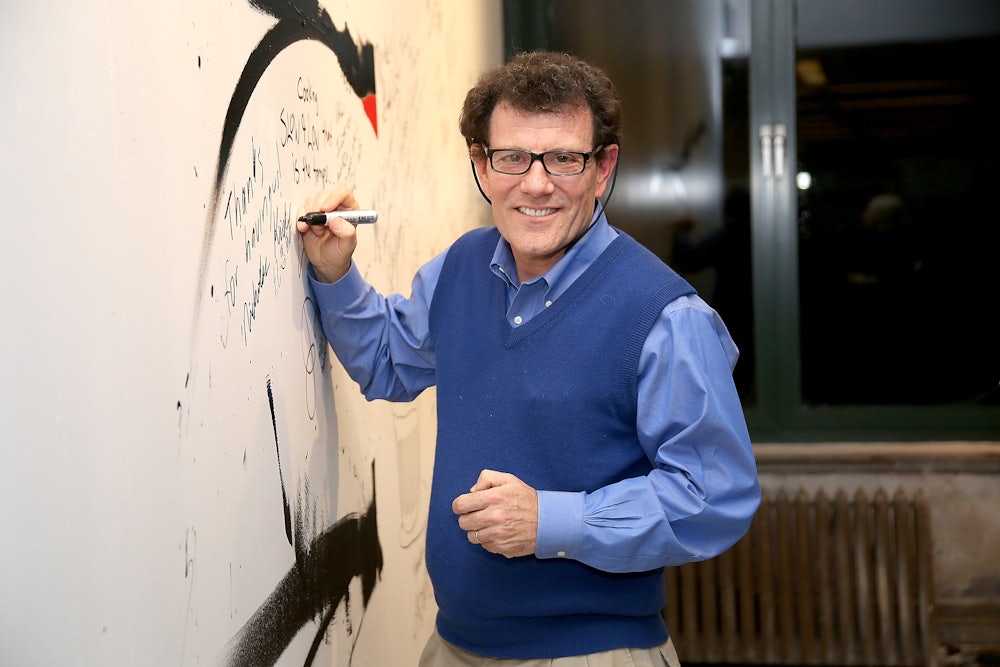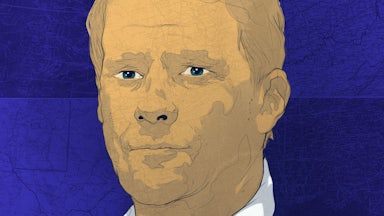Nicholas Kristof, the New York Times columnist who may run for governor of his home state of Oregon next year, was born in 1959 and raised on a farm in Yamhill, a small town halfway between Portland and the Oregon coast. His parents were on the faculty at Portland State University, where his father, a refugee from Eastern Europe, taught political science, and his mother art history. He attended Yamhill Carlton High School, where he was chosen by his classmates as editor of the school newspaper and performed his first communitarian act, turning the paper into a community publication mailed out to every family in the neighborhood. A banner headline in the latter part of his senior year proclaimed that he had received a full scholarship to Harvard College. He took a year off before college to serve as a state officer with Future Farmers of America.
Kristof graduated from Harvard Phi Beta Kappa and went on as a Rhodes scholar to earn first class honors in law at Oxford. After studying Arabic for a year in Cairo, he joined the staff of the Times, serving as a correspondent in Los Angeles, Hong Kong, Beijing, and Tokyo, adding Chinese and Japanese to his repertoire of languages. He and his wife, Sheryl WuDunn, won a joint Pulitzer Prize in 1990 for their coverage of the movement for democracy in China. As a roving Times columnist, he has focused on subjects like human rights abuses and economic deprivation. Former President Bill Clinton said of him: “There is no one in journalism, anywhere in the United States at least, who has done anything like the work he has done to figure out how poor people are actually living around the world, and what their potential is.” (I’m connected to Kristof through my partner, Carol Butler, who is overseeing staffing up his possible campaign.)*
In their latest book, Tightrope: Americans Reaching for Hope, Nick and Sheryl bring him back home to Yamhill, profiling some of the friends with whom he rode to school on the Number 6 bus as a teenager, and the ways in which their potential was thwarted by the vagaries of economic circumstance. One of them, Farlan Knapp, whose picture abuts Nick’s in the freshman yearbook, died of liver failure at the age of 51, after a “Dantesque journey through drugs, alcohol, crime, and family dysfunction.” Kevin Green, Nick’s fellow cross-country team member, was convicted of drug-related felonies and died at 54 when his organs gave out. This doesn’t even begin to enumerate the number of premature deaths in these two Yamhill families alone through three generations—all of them, in Kristof and WuDunn’s view, “deaths of despair” that are emblematic of the crisis in the American working class, whose members walk a tightrope from which they could tumble into disaster at any moment.
In a very genuine sense, Nick never really left his hometown of Yamhill. He and Sheryl have regularly returned to the family farm, which now produces wine grapes and cider apples instead of sheep’s wool and cherries, and where his mother still lives. His children, as he puts it, “become farm kids for the summer.” He has maintained close friendships in the town throughout his adult life, something manifest in the PBS documentary on Amazon Prime Video with the same title as the new book. He and Sheryl purchased their own property near the family farm in 1993.
The crisis of the American working class—characterized by stagnant wages, the disappearance of well-paying union jobs, and the lack of upward mobility—is also reflected in the withering of its social institutions, a phenomenon first identified by Robert Putnam in his 2000 book, Bowling Alone. Kristof and WuDunn tell us in Tightrope that the town of Yamhill once boasted a Masonic Lodge, an Odd Fellows secret society, a women’s association, a Veterans of Foreign Wars post, and a playful gossip section in the local weekly; although the four churches in town still stand, those other conduits for social intercourse have vanished. For evidence of the vital importance of social cohesion, the authors adduce the Roseto Effect, a concept from a study of a tight-knit Italian American community in Roseto, Pennsylvania, which found that, although its members were leading shockingly unhealthy lives—smoking, drinking, consuming vast quantities of fatty foods—their rate of heart disease was extremely low, an achievement attributed to the salubrious effect of the strong social bonds among them.
Putnam, in his most recent work, The Upswing: How America Came Together a Century Ago and How We Can Do It Again, written with Shaylyn Romney Garrett (and reviewed by me in the October 2020 issue of this magazine), offers a broader vision than either Tightrope or Bowling Alone of what has transpired in America in recent times, examining four key areas of American life: economics, politics, society, and culture. Putnam finds that reformers of the early twentieth century set America on a course toward increasing economic equality, a politics of accommodation, a social order replete with voluntary associations, and a culture in which people thought more in terms of the collective “We” than the individualistic “I.” Around 1970, he believes, all of these trends began to reverse themselves, leading to where we as a country are now. Most every adult whose misery is recounted in Tightrope, and who voted in the 2016 election, cast their ballot for Donald Trump.
Nicholas Kristof thinks holistically. At the end of a memo outlining what his goals as governor would be, he writes: “All these aims work together. Bolstering education would make economic development easier, and that can help heal the rift between the Portland area and Eastern Oregon,” referring to the section of the state with leaders who want to secede and merge with Idaho. That is an enormously ambitious goal, but Nick’s record of success, so far, is pretty good.
* This article has been updated.








